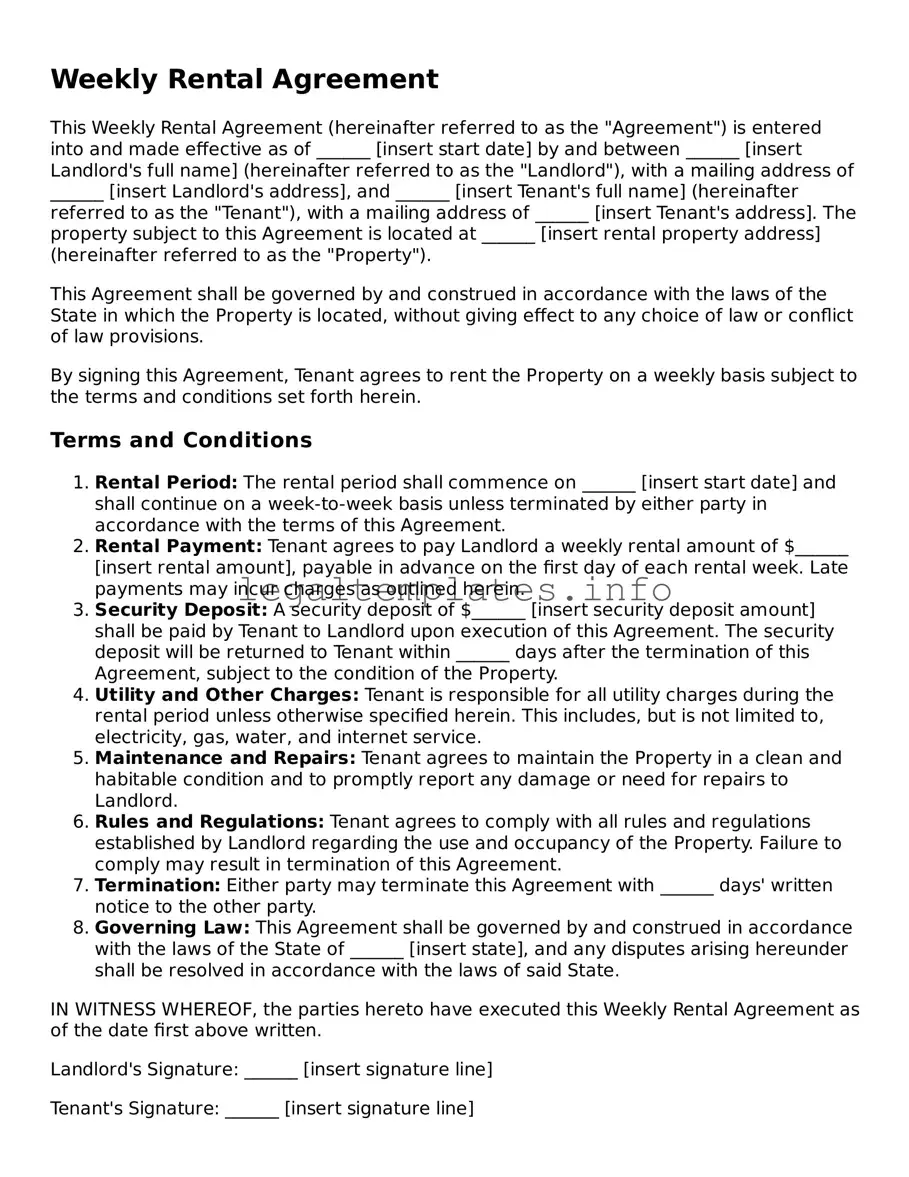What is a Weekly Rental Agreement?
A Weekly Rental Agreement is a legally binding document between a landlord and a tenant that outlines the terms and conditions for renting property on a week-to-week basis. This type of agreement provides flexibility for both parties as it allows for short-term occupancy with the option to extend week by week.
How does a Weekly Rental Agreement differ from a traditional lease?
Unlike traditional leases, which typically have a duration of one year or more, a Weekly Rental Agreement operates on a much shorter timeframe, renewing every week. This allows for greater flexibility but also means that either party can alter or terminate the agreement with minimal notice, depending on the terms outlined in the agreement.
What should be included in a Weekly Rental Agreement?
The agreement should clearly state the rental amount, due date, and acceptable payment methods. It should also specify the property address, the names of all parties involved, the start date of the rental period, and any other terms regarding the use of the property, including policies on guests, pets, and maintenance responsibilities.
Is a security deposit required for a Weekly Rental Agreement?
While not a legal requirement, a security deposit may be requested by the landlord to cover potential damages or unpaid rent. If a deposit is collected, the agreement should specify the amount, the conditions under which it will be returned, and any circumstances under which the landlord may retain part or all of the deposit.
How can either party terminate a Weekly Rental Agreement?
Termination policies should be outlined in the agreement itself, including how much notice must be given by either party to end the rental arrangement. Typically, a week's notice from either the landlord or the tenant is standard, but this can vary based on mutual agreement.
Can the rent be increased during a Weekly Rental Agreement?
Landlords may reserve the right to increase the rent in a Weekly Rental Agreement. However, the agreement must specify how and when the rent can be increased, including how much notice must be given to the tenant before implementing any rent hike.
Are utilities included in a Weekly Rental Agreement?
This depends on the terms outlined in the agreement. Some weekly rentals may include utilities as part of the rent, while others may require the tenant to pay for utilities separately. It is crucial for both parties to clearly understand and agree upon who is responsible for utility payments.
Is maintenance and repair covered in the agreement?
The agreement should clarify who is responsible for maintenance and repairs. Typically, tenants are responsible for keeping the property clean and reporting any issues, while landlords are responsible for major repairs and maintenance of the property's essential services.
What happens if the Weekly Rental Agreement is breached?
In the event of a breach, the agreement should outline the recourse available to the affected party. This could include termination of the agreement, financial penalties, or other legal remedies. It is important for both parties to understand the consequences of failing to uphold the terms of the agreement.
